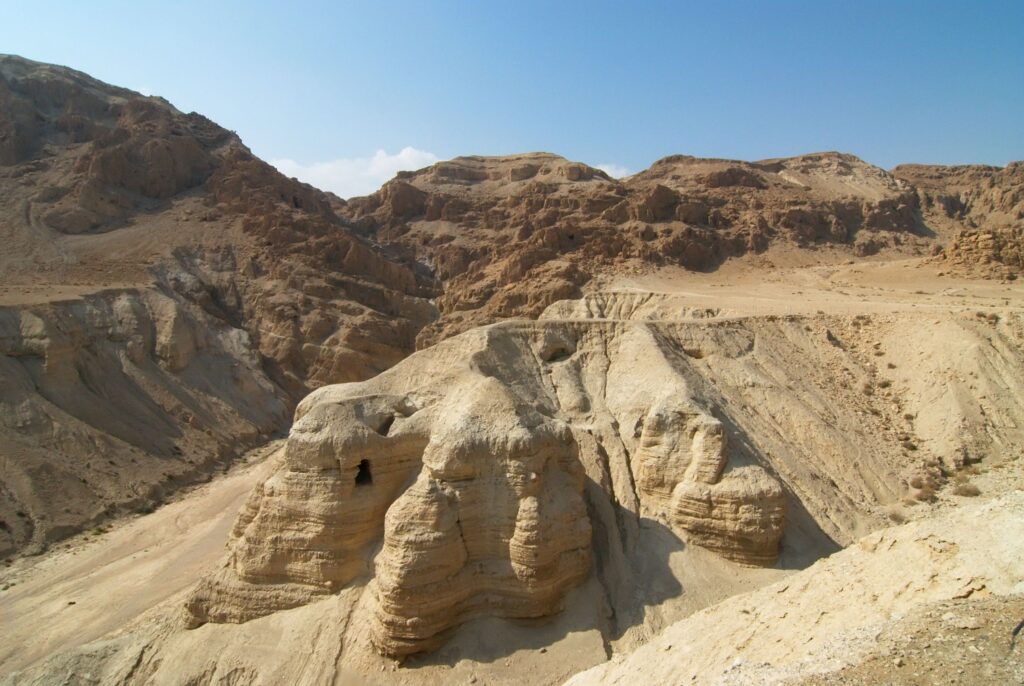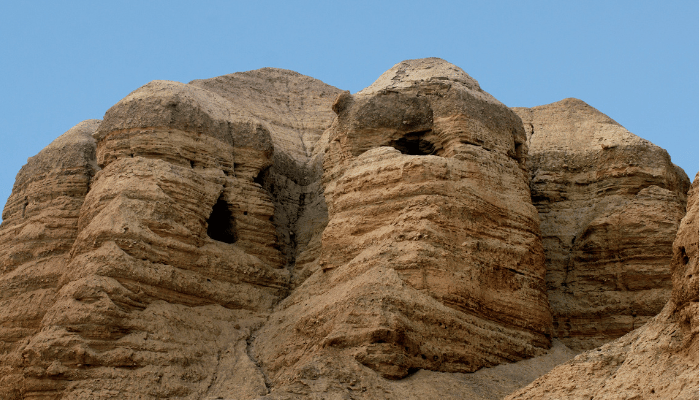Qumran Tours

On tours in Qumran, step back in time and uncover the secrets of a settlement that once thrived in the Judean Desert. Nestled on the northwestern shore of the Dead Sea, Qumran invites you to explore a fascinating world of ancient ruins and biblical mysteries.
As you enter Qumran National Park, encounter a remarkable collection of archaeological remains. Wander through the ruins and imagine life as it once was for the Essenes, a Jewish sect that settled here over 2,000 years ago.
Admire the intricate water system that sustained the community, including a series of pools and aqueducts. Explore the remains of a communal dining room, a kitchen, a watchtower, and even pottery workshops.
Qumran's fame extends far beyond its ruins. This site holds a pivotal place in biblical history, as it was here that the Dead Sea Scrolls were discovered.
In 1947, the caves of Qumran, silent for millennia, yielded their secrets, when a young Bedouin shepherd, searching for stray goats, stumbled upon a hidden crevice. Inside, lay clay jars cradling fragile scrolls of leather, their surfaces inscribed with faded Hebrew script. This chance encounter sparked a chain reaction, drawing archaeologists and scholars from across the globe.

The ancient manuscripts, hidden within the caves, offer invaluable insights into Jewish life and thought during the Second Temple period. While the original scrolls are now housed in museums, Qumran provides a unique opportunity to explore the place where they were found. Visit the Cave of the Scrolls and envision the moment of their discovery. Then, head to the visitor center to view fascinating replicas and learn more about their significance.
Qumran's allure extends beyond its history and archaeology. The surrounding landscape is captivating in its own right. Standing on the plateau, you'll gaze upon the vast expanse of the Dead Sea, its waters stretching towards the horizon. Then, to the east, the rugged cliffs of the Judean Desert rise dramatically, creating a breathtaking backdrop.
Immerse yourself in the tranquility of this ancient site, while strolling through the ruins. Feel the warmth of the desert sun, and listen to the whispers of the past echoing through the windswept landscape.
Qumran awaits those who seek to uncover the mysteries of the past and experience the beauty of a timeless landscape. Embark on a journey of discovery and let this remarkable site reveal its secrets to you.
You can also read about: Tours in Jaffa | Tours in Hula Valley



